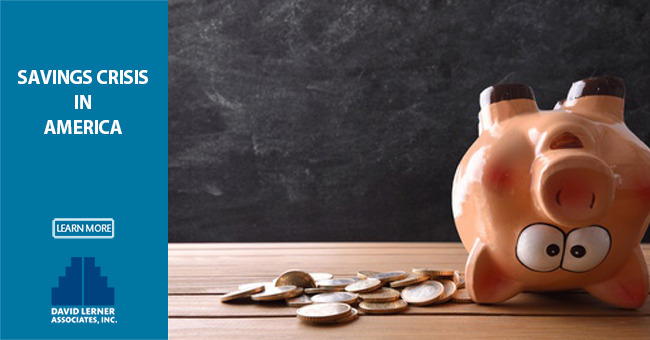
A Savings Crisis in America
Take a look at your savings account. If you were hit with an unexpected expense of $500 or $1000, would you be able to pay it?
If not, you’re not alone. According to a recent study, nearly 60% of Americans don’t have enough savings to cover such an unplanned expense. Surprisingly enough, Millennials were the most prepared. 47% of those aged 18-29 said they could dip into savings to cover an unplanned expense, a substantial increase from 33% in 2014.
If you’re already behind, living paycheck to paycheck, then putting an emergency fund together may seem unrealistic, but it is achievable. All that needs to happen is a change in habits.
The first step to building your emergency fund is to set a reachable savings goal. Start with $500. That’s something that can be done in a few months or even less if you are frugal.
Put a time limit on it. “I want to save $500 by June 1st.” Ok, so now you can break that down into how much needs to be set aside monthly or even weekly.
The trick is to not have to earn extra money, but rather find the savings in the money you’re already spending. For example, take a look at your credit card payments. Is there a way to reduce your rates? Turn over your credit card, and call the number on the back. A simple request to get a rate reduction might result in a pleasantly surprising outcome.
Shopping around for better insurance policies can save you money. So can installing a programmable thermostat, planning your grocery shopping instead of just wandering around the aisles picking up random, unnecessary items.
Try reducing your number of dinners out per month. You’d be surprised at how much you spend on restaurants. Saving money on gas is easy if you have a colleague who lives close by and is willing to car pool, or you could use public transportation.
Ask yourself, “How often do I watch Netflix? Cable?” Find those monthly items that you’re paying you’re for but not using. Is there a better cell phone plan you could be on?
Before you know it, that $500 will be easily available to you and ready to be stored away in your emergency fund account.
In a few months, you’ll hit your first goal of say, $500. Now set another goal, maybe double the amount. And keep going until you can reach a goal of having an entire month’s worth of expenses sitting in your account — then two months, three months, and so on.
If and when an emergency does happen, you’ll be able to sleep at night, knowing that you planned ahead and can continue living your life undisrupted.
IMPORTANT DISCLOSURES
Material contained in this article is provided for information purposes only and is not intended to be used in connection with the evaluation of any investments offered by David Lerner Associates, Inc. This material does not constitute an offer or recommendation to buy or sell securities and should not be considered in connection with the purchase or sale of securities.
To the extent that this material concerns tax matters, it is not intended or written to be used, and cannot be used, by a taxpayer for the purpose of avoiding penalties that may be imposed by law.
Each taxpayer should seek independent advice from a tax professional based on his or her individual circumstances.
These materials are provided for general information and educational purposes based upon publicly available information from sources believed to be reliable– we cannot assure the accuracy or completeness of these materials. The information in these materials may change at any time and without notice.
David Lerner Associates does not provide tax or legal advice. The information presented here is not specific to any individual's personal circumstances. Member FINRA & SIPC

